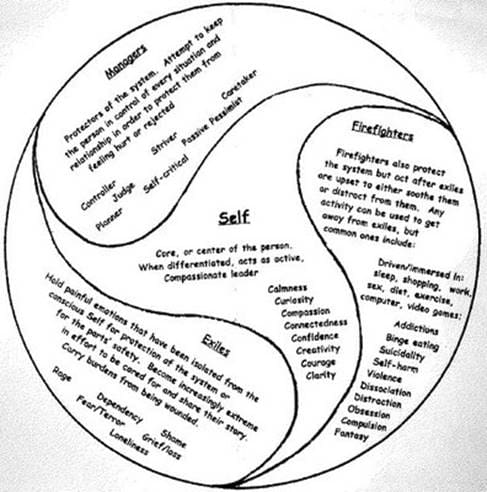Therapeutic Techniques
COGNITIVE BEHAVIORAL THERAPY (CBT) & ALL ITS VARIATIONS
Dr. Gildston: Professional Member, Association for Behavior and Cognitive Therapies (ABCT)
All psychotherapy has cognitive components. A truly cognitive-behavioral approach, however, distinguishes itself by the interventions it champions to change cognitive experiences, including the transformation not only of thoughts, assumptions, evaluations, and beliefs, but of related emotions and behaviors as well.
Each of these key human components influences the others. CBT therapies are less concerned with the psychodynamic understanding of unconscious emotions and drives and more focused on how the patient perceives current realities. The meaning given to events is what is deemed to be important. Therapy is geared toward moving away from negative constellations toward more flexible, realistic, and positive schema.
Over the years CBT has spawned a host of modifications in approach. Our clinicians are trained not only in the enduring basic approach of CBT but in all of its many variations as well. They use their expertise to select the best intervention or combination of interventions for each client. Among the most popular variations are:
- REBT Rational Emotive Behavior Therapy
- ERP Exposure and Response Prevention
- ACT Acceptance and Commitment Therapy
- DBT Dialectical Behavior Therapy
- M & M Mindfulness & Mentalization
- CFT Cognitive Family Therapy
- MI Motivational Interviewing
- IRRT Imagery Rescripting and Reprocessing Therapy
- CAT Cognitive Analytic Therapy
- Goals:
- Identify:
- maladaptive and irrational thoughts.
- debilitating negative emotions.
- behavior locked into such thoughts and emotions.
- core non-optimal beliefs--many formed in childhood--that result in reflexive maladaptive and irrational responses.
- Identify:
-
- Specify:
- how and why these factors are inaccurate, dysfunctional, irrational, or simply non-optimal.
- Reject:
- such distorted, unrealistic, unhelpful cognitions, emotions and behaviors.
- Replace:
- with those that are more functional, realistic, and helpful.
- Specify:

- Challenges;
- Clinical Depression
- Obsessive Compulsive Disorder
- Generalized Anxiety
- Specific Anxieties
- Social Phobia
- Panic Disorders
- Eating Disorders
- Weight Managment
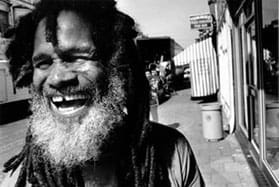
Our Director, Dr. Gildston, has presented advanced professional workshops on the following topics, among many others:
- “DBT and ACT: How different are they from CBT?”
- “Rational Emotive Therapy for troubled relationships.”
- “A cognitive-behavioral approach to giving up bad habits.”
- “We’re only a few new thoughts away from conquering those panic attacks.”
- “Mama said it, Daddy reinforced it, and they both modeled it…. But are the related hand-me-down beliefs and actions optimal?”
- Dr. Gildston chaired a workshop at the 6th World Congress of Behavioral and Cognitive Therapies at Boston University in June of 2010.
- Dr. Gildston is also the Director of the North Shore Cognitive Behavioral Therapy Center
PSYCHODYNAMIC PSYCHOTHERAPY: LONG-TERM & SHORT-TERM
At our center we only have qualified Mental Health Professionals—such as Dr. Gildston—with a license that allows that professional to employ psychodynamic psychotherapy and psychoanalysis in their therapeutic work because they have been trained to employ these modalities.
Long-Term Psychodynamic Psychotherapy, also known as insight-oriented therapy, is based in part on certain Freudian concepts. It can be used as a primary or ancillary approach for stubborn, chronic emotional pain.
Whereas CBT and its modern offshoots aim to solve current problems in a timely manner, only short-term psychodynamic psychotherapy (see below) operates somewhat similarly.
Long-term psychodynamic psychotherapy seeks out early traumatic events—forgotten and/or repressed—which have never been adequately resolved and which are preventing us from living to the fullest. We become aware, thereby, of present ways of coping which are ineffective, even destructive. Although they may have served a protective purpose in childhood, such actions and reactions are no longer serviceable. The uncovering process allows us to be more open to learn and act upon a broad range of new options for solving problems based upon freshly developed and more mature perceptions. Hence our relationships are less disturbed by unresolved traumas. One may think about the process as rooting out causes rather than merely removing symptoms.

Historical Roots:
Psychoanalysis: Sexual and aggressive energies in the unconscious id are moderated by the ego to better adapt to external reality. Defense mechanisms are created by the ego to minimize pain and maintain psychic stability. Guilt also controls id drives via the superego created during a period of life labeled “latency” (age 5 to puberty). Psychoanalysis, the father of psychodynamic psychotherapy, is one of the most intense forms of therapy. Typically it requires several sessions per week—anywhere from three to five—and incorporates the use of the “couch” wherein a patient does not have eye to eye contact with the analyst. Ongoing concentrated sessions commonly last for at least a year or two. Some patients continue for many more years.

Ego Psychology: The focus is on boosting and maintaining the work of the ego in light of the demands of reality. It aims to increase the patient’s ability to incorporate reality testing, defense, and adaptation into daily life.
Object Relations: Based on the belief that we are formed in relation to significant others (objects), we struggle to maintain these relationships even as we strive to build a differentiated self. What happens to us in our childhood connections with others is revisited in our adult relationships. We make every effort to both conquer these habitually relived relations and to free ourselves from them.
Self Psychology: The presence or lack of self-esteem within our experience and image of our self is a key factor in shaping our lives. The ability to establish adequate boundaries between our self and others will determine how well we can differentiate our self from others. The focus of therapy is on establishing differentiation and realistic boundaries.
Short-Term Psychodynamic Psychotherapy
Short-Term psychodynamic therapy differs from long-term psychotherapy mostly in approach rather than theory. Unlike long-term psychodynamic therapy in which the patient in free association is allowed to go off onto multiple tangents, the short-term approach typically focuses on one major issue at a time. The therapist repeatedly brings the patient back to whatever is the agreed upon problem zone with interpretations centered thereon. Shorter interventions are thought to be able to initiate a process of change that can be ongoing without a long-term continuous therapeutic connection.
Most modern psychodynamic psychotherapists use a mixture of psychodynamic and solution-focused therapies, especially CBT and its more recent variations.
For example, COGNITIVE ANALYTIC THERAPY (CAT) aims to have you think about yourself in a different way. It goes beyond your “diagnosis” to scout out previously learned thinking and behavioral patterns that have become life obstacles in your relationship with yourself and others. The relationship with your therapist is the key starting point.
- Start with the reformulation phase
- What goes wrong
- What works well
- Review “I act as if I….”
- Discover what underlies your mood shifts
- Learn to map out problem patterns
- Analyze/elaborate on the therapist’s suggestions for change

Our Director, Dr. Gildston, has led the following workshops on psychodynamic psychotherapy and psychoanalysis, among others:
- “Why psychoanalysis if CBT can do the trick? Ah, good question!”
- “Major traumas require more. More what?”
- “Psychodynamic therapy does NOT have to be a forever process.”
- “CBT, psychodynamic psychotherapy, and hypnosis: A dynamic trio for change.”
- “The role of questionnaires and paper mapping in CAT.”
- “The up-front and personal therapeutic style of CAT.”
INTERNAL FAMILY SYSTEMS (IFS)/EGO-STATE THERAPY/PARTS WORK
Yes, you do have an underlying whole SELF. But you are more than you think you are. Per IFS there are, within you, multiple personalities. They fit into one of three archetypes: MANAGERS, FIREFIGHTERS, & EXILES. Each of your many “PARTS” perceives reality differently. IFS focuses primarily on those parts that play either extreme roles or healthy roles.
MANAGERS: Protect.
EXILES: Are parts that suffer from trauma, pain, fear, typically from childhood or adult horrors like rape or war.
FIREFIGHTERS: Emerge when exiles break out, demand attention, which often leads to impulsive behaviors: violence, drugs, binge eating, dangerous sex, overworking, etc.
IFS GOAL: Remove yourself from the web of parts to access the whole SELF which can facilitate healing difficult parts, resulting in a state of harmony among the parts. Heal the inner conflict (HIC).
EGO-STATE THERAPY (Often referred to as: PARTS WORK)
Developed most fully by Jack and Helen Watkins, this intervention aims to resolve conflicts between various “ego states” that constitute a “family of self” within a single individual. They can be uncovered through dynamic verbal exploration, guided imagery, and/or hypnosis. Developmentally, children learn to integrate concepts into higher level categories. “Milk” and “bread” are later understood to fall into the category of “food.” The opposite also holds true. As the child matures he learns to differentiate “food” from “vehicles.” Both processes are normal and adaptive. Feelings, perceptions, and thoughts also organize into permeable patterns or clusters which constitute our various “ego states.” They are bound together by some common principle. The genesis of ego states is not restricted to one age period nor do ego states necessarily keep the same force over a lifetime. As clinicians we can talk to different ego states and have ego states talk to each other. This form of therapy has been found to be exceedingly useful with many types of disorders.
When the separating process becomes excessive or maladaptive, it is labeled “dissociation.” Multiple Personality Disorder (MPD) represents an extreme and maladaptive form of the normal differentiation continuum.
HYPNOTHERAPY & GUIDED IMAGERY
Dr. Gildston: Advanced Certification: Approved Consultant, American Society of Clinical Hypnosis (ASCH); Past President, New York Society of Clinical Hypnosis (NYSCH).
Hypnosis and Guided Imagery enable us to change our state of mind. Harvard University researchers demonstrated that, in these naturally altered states, we engage more areas of the brain than are involved in our every-day state. This makes for more brain connections and more profound mind-body connections to effect desired changes.
The route to hypnosis and guided imagery is most often achieved through relaxation which, in turn, generates a release of tension in both mind and body. With these techniques we empower ourselves to overcome life's roadblocks.
Anyone not seriously mentally retarded or brain damaged can benefit from hypnosis and guided imagery.

You are probably the victim of many myths about hypnosis and guided imagery. If you decide to try these powerful techniques to help resolve any of your concerns, we will answer all of your questions to put your mind at ease during your free consultation.
- Ericksonian Hypnotherapy: Our therapists are experts in this specialized technique which is used typically in conjunction with other techniques to allow for more rapid resolution of many problematic issues.
- Past-Life Regression: For those who wish to explore this possibility, the psychotherapists at our Center have extensive training and experience in its useful application. It should be noted that research does not confirm whether or not positive results in therapy confirm the reality of past lives or can be explained otherwise.
- Guided Imagery: Combines selected aspects of Neurolinguistic Programming, Ericksonian hypnosis, Moreno Psychodrama, Jungian archetypes, and other image-rich techniques to help guide the unconscious toward desired goals.
- Issues Addressed:
-
- Smoking
- Weight
- Performance Anxiety
- Achieving Peak Performance
- Habits
- Speech Fears
- Sleep
- Stress
- Confidence
- Shyness
-
- Sex
- Sports
- Anxiety
- Phobias
- Anger
- Depression
- Grief/Loss
- Addiction
- Obsessions
- Relationships
- PTSD
-
- Chronic Pain
- Tinnitus
- Bruxism
- TMJ/Gnashing Teeth
- ADD/ADHD
- Stuttering
- PMS
- IBS
- Birthing
- Misplaced Items
- Memory Enhancement
Dr. Gildston is Past President of the New York Society of Clinical Hypnosis and a Representative to the Governing Board of the American Society of Clinical Hypnosis.
Dr. Gildston co-authored (with her late husband) the following article:
“Use of Altered States of Consciousness in the Rehabilitation of the Speech, Language and Hearing Impaired Part I: Hypnosis.” The Proceedings of the19th Congress of the International Association of Logopaedics and Phoniatrics. Edinburgh, Scotland, 1983. Vol. 1. 38-43.
Our Director, Dr. Gildston, has presented advanced professional workshops on the following topics, among many others:
- “Hypnosis in the treatment of LD, AD-HD, ODD and Asperger’s Disorder.”
- “Ericksonian hypnotherapy for treating bad habits and substance related disorders.”
- “Improving your golf or tennis swing via guided imagery.”
- “Hypnosis for troubled relationships.”
- “Changing the self-concept with hypnosis.”
- “Guided imagery and hypnosis for performance, social and test anxiety.”
- “Hypnosis in the control of smoking and weight.”
EMDR; FSAP; BRAINSPOTTING
Dr. Gildston: Certified Professional Member, International EMDR Association (EMDRIA). To be CERTIFIED in EMDR by EMDRIA, therapists must have completed extensive EMDRIA approved training and given evidence of broad experience employing EMDR with patients.
EMDR (Eye Movement Desensitization and Reprocessing) is a powerful technique that often achieves quick-acting, permanent results. Simple alternating left-right eye movements were originally its method for achieving positive emotional and behavioral changes. As the discipline evolved, however, multiple forms of bilateral stimulation proved to be equally effective for treating a broad array of problems.
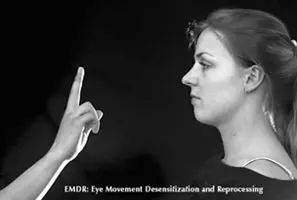
This revolutionary technique relies on the theorized capacity of our emotions and thoughts to normalize toward the positive when appropriately stimulated. Psychological wound healing is believed to be similar to the body's natural attempts to heal itself when wounded physically.
The International EMDR Association defines EMDR in part as follows:
"In the broadest sense, EMDR is intended to alleviate human suffering and assist individuals and human society to fulfill their potential for development while minimizing risks of harm in its application. For the client, the aim of EMDR treatment is to achieve the most profound and comprehensive treatment effects in the shortest period of time, while maintaining client stability within a balanced family and social system.
EMDR is founded on the premise that each person has both an innate tendency to move toward health and wholeness, and the inner capacity to achieve it. EMDR is grounded in psychological science and is informed by both psychological theory and research on the brain.
EMDR integrates elements from both psychological theories (e.g. affect, attachment, behavior, bioinformational processing, cognitive, humanistic, family systems, psychodynamic and somatic) and psychotherapies (e.g., body-based, cognitive-behavioral, interpersonal, person-centered, and psychodynamic) into a standardized set of procedures and clinical protocols. Research on how the brain processes information and generates consciousness also informs the evolution of EMDR theory and procedure."
- Issues Addressed:
-
- Post Traumatic Stress Disorder (PTSD)
- Phobias
- Addictions
- Depression
-
- Eating Disorders
- Feeling stuck
- Obsessive Compulsive Disorder
-
- Generalized Anxiety
- Specific Anxieties
- Panic Disorders
and most other unhappy states of mind.
FSAP:
Dr. Gildston: Certified Professional Member,
Feeling State Addiction Protocol (FSAP)
“EMDR is a clinically proven psychotherapy that has been used in the treatment of Posttraumatic Stress Disorder (PTSD) to reduce traumatic fixations. People who have been traumatized often have vivid memories of the traumatic event. EMDR processes and reduces the intensity of these memories. FSAP has modified the EMDR protocol because of the different psychological dynamics that create compulsive fixations rather than traumatic fixations.” (per creator of FSAP)
Click on Addictions and Compulsive Behaviors to see a full description of FSAP with regard to its application for addictions.
BRAINSPOTTING
Dr. Gildston has completed Certification in Brainspotting 1.
Brainspotting (BSP) is based on a deep attunement between the therapist and the patient. The therapist searches for somatic cues—eyespots—and uses them, once found, to extinguish unprocessed PTSD symptoms by down-regulating reactions in the amygdala.
The Brainspotting Canada Association says it best: “BSP is a neuroscience-informed treatment which harnesses the brain’s natural healing mechanisms, using specific eye positions and focused mindfulness.”
“Often BSP is used in conjunction with bilateral sound—music or nature sounds which move back and forth between right and left ears, which balances activation of the right and left brain hemispheres and activates the parasympathetic, or calming, part of the nervous system.” “BSP uses the brain and body’s natural ability to self-scan and to self-heal, or move back to a state of equilibrium. When a brainspot is activated, the deep brain appears to reflexively signal the therapist that a neural network holding unprocessed trauma has been found….It is common for clients to experience both rapid relief of distress and profound insight.”
How does it work?
- Dr. David Grant discovered brainspotting by finding out that “Where you look affects how you feel.”
- The therapist locates points in the patient’s visual field that help to access trauma that has not been processed.
- Subcortical brain activity organizes itself around particular eye positions.
- Trauma can be processed by accessing either calm or distressed areas within the body.
- Less talking is needed to effect rapid healing.
- Combines aspects of EMDR, hypnotherapy, and mindfulness.
- Integrates well with other types of therapy.


How is Brainspotting different from EMDR?
- EMDR does not rely on a focused eye position. It uses guided rapid bilateral movement of the eyes, auditory system, and/or the sensory system (e.g. left-right tapping) to achieve its positive effects.
- Issues Addressed: PTSD, Anxiety, Depression, Emotional Dysregulation
ACUPRESSURE; EFT; TFT:
ACUPRESSURE (A combination of acupuncture POINTS and PRESSURE):
Acupressure relies on the non-invasive stimulation of specific acupuncture points associated with the body's energy meridians. It was developed over three thousand years ago in China and is considered a major component of Chinese Traditional Medicine. Unlike Acupuncture, which requires the insertion of fine needles into the body at these key points, acupressure treatments use physical pressure applied by a finger, hand, elbow, or other device.
EFT (Emotional Freedom Technique) and TFT (Thought Field Therapy):
Interventions using the Emotional Freedom Technique (EFT) employ tapping sequences on select acupuncture meridian points on the upper body for various problems. EFT is a simple and sometimes highly effective technique which can be quickly learned and applied to relieve stress. It developed from a more complex technique called Thought Field Therapy (TFT) developed by psychologist Roger Callahan. EFTs founder, Gary Craig, discovered that he was able to achieve the same positive results with this much less complicated approach.
Unlike EMDR, however, Acupressure, EFT and TFT have not been independently validated in objective, scientific research studies. They are, however, used widely, either alone or in combination with other techniques. A vast array of anecdotal reports support their efficacy.
MEDITATION AND MINDFULNESS:

Meditation
Meditation induces an altered mental state which, in turn, induces calm, mindfulness or mindlessness, and peace of body and mind. There are many different meditation techniques. It is important to match the technique to the individual. Our counselors and meditation teachers are trained in multiple schools of meditation as well as in the psychotherapeutic use of meditation.
- Schools of Meditation:
- Transcendental (TM)
- Vipassana
- Zen Buddhist
- Indian Mandala
- Tibetan Chanting
- Benson Modern
- ......and many more.
- Issues Addressed:
- All stress and anxiety related conditions/disorders
- Addictions
- Dysfunctional mood states
- Autoimmune Diseases
- Chronic Pain
- AD-HD
- .....and the like
Mindfulness
Mindfulness is a noun. But it is defined differentially in subtle ways. Review the following:
Dictionary Definition: “Mindfulness is a mental state achieved by focusing one's awareness on the present moment, while calmly acknowledging and accepting one's feelings, thoughts, and bodily sensations. It is used as a therapeutic technique.”
Jon Kabat-Zinn's definition of mindfulness: “paying attention in a particular way; on purpose, in the present moment, and nonjudgmentally.”
Psychology Today defines it in this way: “Mindfulness is a state of active, open attention on the present. When you're mindful, you observe your thoughts and feelings from a distance, without judging them good or bad. Instead of letting your life pass you by, mindfulness means living in the moment and awakening to experience.”
David S. Black, on the other hand, needed 2 pages to render “A Brief Definition of Mindfulness.”
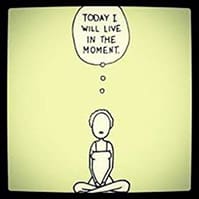
Note his conclusion after listing multiple definitions: “…serious attention to mindfulness by the scientific community was not given until more recently when the concept was translated into measureable terms, or given an operational definition.” Numerous measures of mindfulness, he adds, has “…contributed to study mindfulness on a scientific level…as a dispositional characteristic (a relatively long lasting trait), an outcome (a state of awareness resulting from mindfulness training), and as a practice (mindfulness meditation practice itself).
Our Director, Dr. Gildston, has led the following workshops on Meditation and Mindfulness:
- “TM or Zen Buddhism: Which is right for YOU?”
- “Is the Mindfulness trend hype or reality: stories and statistics”
- “I’m too busy to meditate. What can I do instead?”
ART THERAPY:
Dr. Gildston: Professional Member, American Art Therapy Association (AATA) and Arts In Therapy.
Every major therapeutic technique can be translated, in part, to a corresponding art therapy technique. For appropriately selected individuals, couples, and families with certain problems, using adjunctive art therapy can be of immense benefit.
What is Art Therapy?
Art therapy uses the creative process as a key form of expression for children, adolescents, and adults with emotional, mental, or physical distress. Via verbal and non-verbal modes, art therapy helps to resolve personal and interpersonal issues. It should be understood, however, that the art work itself is just one of many important components in the process of psychotherapy.
As defined by the prestigious American Art Therapy Association:
“Art therapy...is based on the belief that the creative process involved in artistic self-expression helps people to resolve conflicts and problems, develop interpersonal skills, manage behavior, reduce stress, increase self-esteem and self-awareness, and achieve insight."

"Art therapy integrates the fields of human development, visual art (drawing, painting, sculpture, and other art forms), and the creative process with models of counseling and psychotherapy.”
As an example, in a research project entitled Art and Children's Perceptions of Physicians completed at the Cystic Fibrosis Center of Stanford University, one of the art tasks for the children with CF was to “draw a picture of your doctor.” Since it is important that positive affect be generated between long-term patients and their caregivers, an objective of the study was to contrast projective art drawings with self-report measures in examining children's perceptions of their doctors. It was reported that “the results from the children with CF were "hopeful", and reflected the close relationship that is formed over the years of treatment for CF. For example, when asked why she wouldn't recommend her doctor to her friend, one participant replied, "She's my doctor... I want her to myself."”
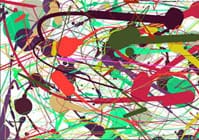
Issues Addressed:
-
- Anxiety
- Depression
- OCD
- Phobias
- AD-HD
- Substance Abuse
-
- Family & Relationship Issues
- Abuse & Domestic Violence
- Trauma & Loss
- Cognitive & Neurological Problems
- Chronic Pain & Disability
- …and more
With respect to my own art work, I experiment with different mediums from oil, watercolor, acrylic, ink, multi-media, and print to stone and clay sculpture. Exploring differing styles from realistic to abstract to contemporary is a rewarding challenge.
Dr. Gildston has been accepted by the Board of the following societies as an Artist Member & into many of their juried shows by distinguished jurors:
American Sumi-e Society;
Art League of Long Island: Showed in “Jeanie Tengelsen Galley.”
Art League of Nassau County
Huntington Arts Council” Showed in “Huntington Arts Gallery.”
Independent Art Society: Won “Honorable Mention.”
Long Island Craft Guild
Long Island Sumi-e Society: Showed in “Graphics Art Gallery.”
Manhasset Art Association: Won “2nd Honorable Mention.”
National Art League: Showed in “Gallery.”
National League of American Pen Women (Artist Division)
Suburban Art League: Won “Certificate of Excellence in Watercolor.”
Sumi-e Society of America
Temple Beth-El: Showed in “Judaica Museum.”
Town of North Hempstead: Won “Certificate of Excellence in Mixed Media.”
Town of Oyster Bay: Won “Honorable Mention for Excellence in Watercolor.”
Music Therapy is the clinical use of music interventions to accomplish individualized goals within a therapeutic relationship. It may entail using musical instruments or listening to carefully selected types of music from Bach to rock and beyond. Evidence based research supports its effectiveness for many mental health problems.
“Where words fail, music speaks” (Anonymous)


Our Director, Dr. Gildston, has conducted (get it?) the following Music Therapy Workshops:
- “How do PTSD, Anxiety, & Sleep Disorders take in the Tibetan Singing Bowl?
- “Troubled teenagers and the hard rock or metal beat.”
- “Banging away anger on differently pitched drums.”
- "Analyzing the effects of humming, singing, or creating new lyrics for ‘Amazing Grace"
BODY WORK AND ENERGY HEALING:
Cloaked in many different names:
Somatic Experiencing
Manipulative Therapy
Breath Work
Energy Medicine
Body Dynamics
Aura Power
Best known non-touch forms:
Reiki
Yoga
Pranayama
Therapeutic Touch
Qigong
Tai Chi
Best known manipulative forms:
Alexander Technique
Craniosacral Therapy
Feldenkrais Method
Rolfing
Shiatsu
Trager Approach
REIKI ENERGY HEALING: Dr. Gildston: Certified Reiki Master
This powerful Japanese technique is an alternative approach to healing physical, emotional, and spiritual problems. Reiki in Japanese means “universal life force energy.”
Reiki is a non-invasive holistic healing method based upon revitalizing and rebalancing the energy system of the body. Yoga labels that energy Prana, Acupuncture and Acupressure call it Ki (Japan) or Chi (China).
The healer uses his or her hands to identify and rebalance those areas of the head and body wherein the energy is too intense, too weak or simply not moving as it should. The technique can be applied with hands on or just over the body as well as at a short distance from the body.
The recipient may feel tingling, warmth, coolness, and (or) energy flow. The visualization of colors, shapes or images may also arise. A general sense of calm and relaxation typically ensues.
Reiki has been used to:
- Improve and Reinforce:
- Beneficial life changes:
- Proper diet
- Desire to exercise
- Body’s natural healing powers
- Body’s immune system
- Sound sleep
- Beneficial life changes:
- Reduce:
- Anxiety
- Chronic pain
- Negative stress reactions
- …and more

If you elect to go this route, you will be treated by a certified Reiki Master Teacher and Healer.

There’s Feldenkrais at work.
Yoga Breathing and the Chakras
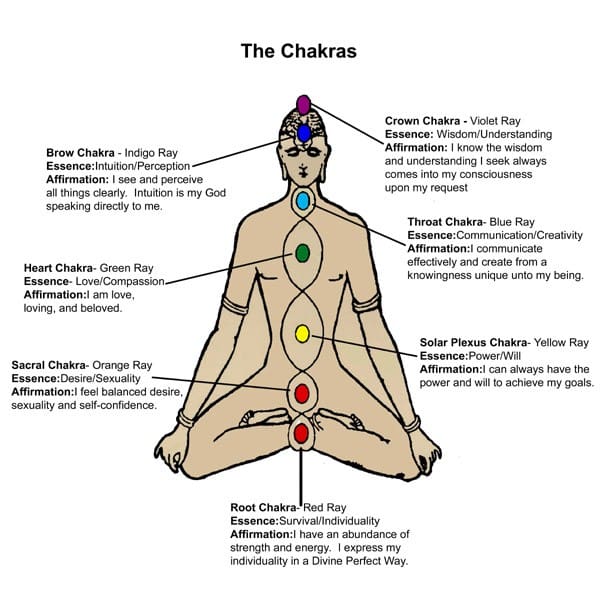
Our Director, Dr. Gildston, has lead the following workshops in Body Work and Energy Healing:
- “Embedding Reiki Energy Healing into Hypnotherapy”
- “Challenging Decision: Will the Alexander or Feldenkreis Technique be better for you.”
- “Research results on the differing Breathing Techniques aimed at reducing anxiety.”
DREAM WORK: A Dynamic Therapeutic Tool
Dream work can provide dramatic insights into roots of current day problems. In ancient times dreams were considered to be a form of supernatural communication. Sometimes they were viewed as evidence of divine intervention.
From Freud's take on dreams as unfulfilled wishes, to Jung's personal and collective dream archetypes, to the more modern spin on the meaning of dreams as messages to the dreamer, dream work is used when appropriate to unveil hidden source material. It can also provide guidelines for positive behaviors despite Plato's famous conclusion: The virtuous man is content to dream what a wicked man really does.
- Issues Addressed:
- Unconscious fears
- Nightmares
- Repeated Dreams
- Dream series
- Repressed memories
- Latent versus manifest content
- Unconscious networking
- Condensation of complex thoughts
- Displacement from threatening to acceptable surface images
- Unique and personal associations to dream content
- Visitation dreams
- Dream channeling
- Dream dramaturgy
- Day dreams
- Preverbal issues
- Dream reflections of dreamers waking state concerns
- Neurophysiological and neurochemical aspects of dreaming

- Intervention Techniques:
-
- Uncovering multiple dreamer ego states (a la Watkins)
- Hypnotherapeutic dream work (a la Erickson)
- Role playing (a la Moreno)
-
- Building bridges (a la Satir & Watkins)
- Cracking the symbol codes (a la Jung and Klein)
-
- Lucid dreaming (a la Hobson)
- and much more
Our Director, Dr. Gildston:
- Integrated both Freud’s and Jung’s dream theories with the newer neurocognitive based theories of dreams.
- The resulting psychotherapeutic benefits have been markedly positive for individuals with issues that involve significant dream components.
BIOFEEDBACK
Dr. Gildston is Certified in Advanced Biofeedback
But…What exactly IS biofeedback?
Literally, it is the human subject receiving objective information about his own functioning. The information is used to effect positive change.
- Typically the feedback is either visual and (or) auditory.
- Verbal feedback, hypnosis or guided imagery may accompany the use of biofeedback equipment.
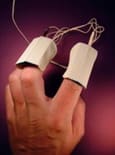
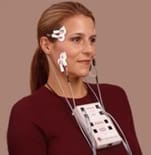
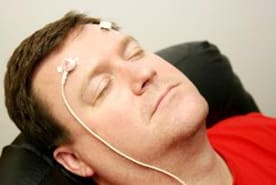
There are three major types of biofeedback:
- Temperature Control: Making a part of the body warmer usually brings more relaxation and reduces stress. Correlated biological systems also move toward a more positive state.
- EEG (Electroencephalography): Electrodes on the head read brain waves. The subject attempts to change the brain wave pattern in order to induce relaxation and reduce pain. The four waves most commonly identified in biofeedback are Beta, Alpha, and Theta—although Delta and Gamma waves are also measured for other purposes with different equipment:
- Beta: 15-30 Hz. Everyday alert, wakeful consciousness
- Gamma: 26-100 Hz. Binding population of neurons into a network to carry out certain cognitive or motor functions
- Alpha: 9-14 Hz. Relaxation, calm, lucid altered state; light hypnotic trance; guided imagery
- Theta: 4-8 Hz: Deep relaxation; meditation, deep hypnotic trance
- Delta: 1-3 Hz. Deep dreamless sleep
- EMG: (Electromyography): Electrodes are placed on painful areas of the body. The subject attempts to change the feedback he is getting to feedback that is correlated with reduced pain. Biofeedback refers to the use of equipment to feed back to you information --via seeing a certain pattern or hearing certain sounds about your level of muscle tonus, finger temperature, or brain activity. The goal is to lessen tension, induce relaxation, and produce altered states of body and mind within which to normalize bodily dysfunctions.
- Issues Addressed:
-
- Migraine headaches
- Irritable bowel syndrome
-
- High blood pressure
-
- ...... and the like
Our Director, Dr. Gildston, has conducted advanced professional workshops on the following topics, among many others:
- “Biofeedback for stress related disorders.”
- “Just how helpful is biofeedback for ADD and AD-HD?”
- “Biofeedback and Acupressure for migraine headache.”
- “Simple versus complex forms of biofeedback/neurofeedback.”


